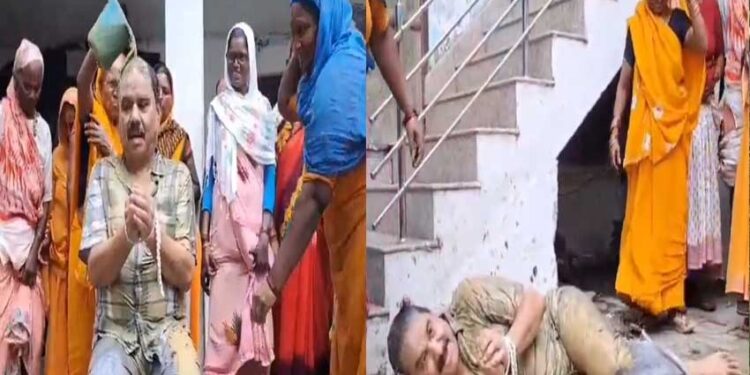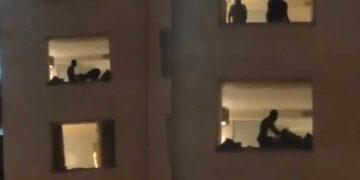Shyam Bahadur Verma (English: Shyam Bahadur Verma; born- April 10, 1932, Uttar Pradesh; died- November 20, 2009, New Delhi) was a versatile genius, scholar of many subjects, thinker and poet. He had contributed many dictionaries to Hindi literature. In each of his rooms, books were visible from floor to ceiling. Shyam Bahadur Verma deeply studied various languages and many branches of knowledge and science. In 1953, he alone crossed the Himalayas on foot and traveled to Tibet. For his entire literary services, Hindi Academy, Delhi had given him ‘Sahityakar Samman’ in the year 1997-98.
Shyam Bahadur Verma was born on April 10, 1932 in Aonla town of Bareilly district in Uttar Pradesh. His father’s name was Lal Bahadur Verma and mother’s name was Vidyavati. Mrs. Vidyavati Verma was a very dedicated social and political activist in Bareilly and practiced homeopathy since 1960. After the death of her husband, she not only ran the family in very difficult circumstances but also imparted the best values to the children.
In 1946, at the age of fourteen, Shyam Bahadur Verma became a volunteer of ‘Rashtriya Swayamsevak Sangh’ and in 1948 he went to jail after doing Satyagraha in protest against the unjust ban on the Sangh. In those days he was doing B.Sc. in Shahjahanpur. Was a student of. B.Sc. in 1950 After passing, due to weak financial condition of the family, he did M.Sc. Could not take admission in M.P. and spent his entire time in Sangh work for one year. At that time, he was obsessed with three things – ‘Sangh work’, ‘Maximum education’ and ‘Financial support to the family’. Then he came to his home district Bareilly and while living there, he passed the ‘Sahitya Ratna’ and ‘Ayurvedaratna’ examinations in 1952. His hunger for education was very strong. Therefore, despite financial difficulties, he taught tuition and completed M.Sc. in Mathematics from Bareilly College in 1953. Just passed. He did M.A. in ‘Ancient Indian History and Culture’ from ‘Agra University’ in 1967. Had passed the examination in first division.
By combining Sangh work and earning a living, Shyam Bahadur Verma became a teacher in Narayan Vidyalaya at a place called Askot in Almora district as per the orders of the Sangh. But due to opposition to the conversion efforts of Christian missionaries there, he came to Haldwani the very next year. There he started Shishu Mandir. After giving a strong foundation to Shishu Mandir, he reached the college of Bhogaon in Mainpuri district in 1956 as a mathematics teacher. The seven years of his stay in Bhogaon became the main reason for the blossoming of his versatile talent and hard work. As the District Executive of Mainpuri, while devoting his full energy to Sangh work, he stayed there and completed M.A. in English and Sanskrit languages. Passed the examinations in first division. In 1963, he moved from Bhogaon to Ranjit Singh Memorial Degree College in Dhampur, Bijnor as a professor of English. Here too he remained engaged in Sangh work with full speed. He used to stay in the Sangh office at both Bhogaon and Dhampur places.
After coming to Delhi, Shyam Bahadur Verma became active in many organizations of Sangh Parivar, like Vishwa Hindu Parishad, Bharatiya Sahitya Parishad, Vivekananda Kendra etc. For many years he edited the Hindi “Kendra Patrika” of the Vivekananda Centre. He not only wrote in magazines like “Hindu Chetna”, “Hindu Vishwa”, “Panchjanya”, “Rashtradharma” etc., dailies like Hindustan and Navbharat Times also published him. In 1972, in the birth centenary of Maharishi Aurobindo, he published four independent books named “Kranti Yogi Sri Aurobindo”, “Mahayogi Sri Aurobindo”, “Sri Aurobindo Sahitya Darshan” and “Sri Aurobindo Vichardarshan”. He also composed inspirational texts like “Nation Maker Swami Vivekananda” and “Yug Purush Shri Ram”.
The Hindi Academy of Delhi had honored him with ‘Sahityakar Samman’ in 1997-1998. Now he was moving from biographer to lexicographer. His Brihat Vishva Sukti Kosh, published in three huge volumes, has become an important reference book. Many editions of this large dictionary of approximately 2000 pages have been published. After dealing with the Sukti dictionary, Shyam Bahadur was engaged in the practice of preparing a modern style “Hindi-Hindi dictionary” for the last 19 years.
The Hindi Academy of Delhi had honored him with ‘Sahityakar Samman’ in 1997-1998. Now he was moving from biographer to lexicographer. His Brihat Vishva Sukti Kosh, published in three huge volumes, has become an important reference book. Many editions of this large dictionary of approximately 2000 pages have been published. After dealing with the Sukti dictionary, Shyam Bahadur was engaged in the practice of preparing a modern style “Hindi-Hindi dictionary” for the last 19 years.










